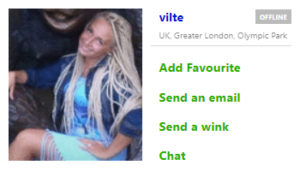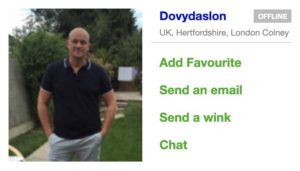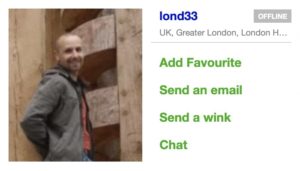Dating stereotypes, those age-old preconceptions that dictate how individuals should behave and what they should expect when they are courting or being courted, have been an inherent part of our societies for centuries. These stereotypes, whether it’s the assumption that men should always make the first move, or the expectation that women should play hard to get, can often limit our experiences and perceptions of love and relationships.
In this increasingly progressive modern world, it’s crucial to challenge and reassess these traditional norms that have defined our dating culture. With more fluid gender roles, increasing diversity and the rise of digital dating platforms, these stereotypes no longer fit the narrative of contemporary love and relationships.
This article aims to delve into these stereotypes, questioning their relevance in the face of evolving societal norms, and to offer a fresh perspective on modern love. It is an exploration of our preconceived notions about dating and a celebration of the ever-changing dynamics of love in the 21st century. Through this discussion, we hope to encourage open-mindedness and a departure from dated stereotypes, forging a path towards a more inclusive, balanced and realistic understanding of modern love.
The Stereotypes in Dating
Dating stereotypes have their roots deeply embedded in cultural, social, and historical contexts. These stereotypes often perpetuate traditional gender roles and expectations, creating a limited framework within which individuals are expected to operate.
One of the most enduring stereotypes is the notion that men should always initiate the courtship process. This idea stems from chivalrous traditions where men were expected to express their interest first and women were encouraged to remain passive, playing ‘hard to get’. Another prevalent stereotype suggests that women are more invested in relationships and tend to seek commitment sooner than men, creating an assumption of women being ‘clingy’ or ‘needy’.
These stereotypes are not confined to heterosexual relationships. In same-sex relationships, the question ‘Who does what?’ often arises, with societal norms trying to superimpose heteronormative roles onto couples, pigeonholing one individual into the ‘masculine’ role and the other into the ‘feminine’ role.
Consider the case of John and Jane (names changed to maintain privacy). John felt compelled to pay for dates, plan extravagant outings and adopt a ‘leading’ role in their relationship due to societal pressures and the deep-seated belief that as a man, this was expected of him. Jane, in turn, felt she had to suppress her desire to share financial responsibilities or initiate dates due to the fear of emasculating John or violating social norms.
Similarly, Tom and Harry, a same-sex couple, found themselves constantly being asked who was ‘the man’ in the relationship, underlining the pervasive attempts to impose stereotypical roles even where they clearly do not apply.
These stereotypes have significant impacts on individuals and society. They create undue pressure and expectations that can cause stress, miscommunication, and dissatisfaction within relationships. Furthermore, they limit individuals’ personal expression and reinforce gender inequality, perpetuating harmful notions of masculinity and femininity. On a societal level, these stereotypes uphold a rigid structure that can be exclusionary and stunting, preventing the recognition and validation of diverse relationship models. By imposing these stereotypes, society misses out on the richness of diversity and the opportunity to embrace a more nuanced understanding of love and relationships.
The Modern Dating Scene
The landscape of modern dating has seen a seismic shift from its traditional counterpart, driven by technological advancements, changing societal norms, and progressive views. The onset of digital platforms has revolutionised the way people meet, interact, and form connections, expanding the dating pool beyond geographical boundaries and enabling more control over how one presents themselves.
Alongside the rise of online dating, there’s a growing shift towards progressive ideologies in dating. Gender roles are becoming less rigid, with people feeling increasingly comfortable in rejecting traditional expectations and norms. There’s a greater emphasis on equality, communication, and individuality, as well as the acceptance and normalisation of diverse romantic and sexual preferences.
For instance, dating apps like Bumble, which require women to initiate conversation, directly challenge the stereotype that men should always make the first move. The success of this model underscores a growing appetite for breaking free from traditional dating norms.
Consider the story of Laura, a confident career woman who didn’t shy away from initiating contact with Mark, a man she found interesting on a dating app. This act alone broke the long-standing stereotype of men always needing to make the first move. Similarly, in the case of Adam and Steve, a same-sex couple, both shared domestic responsibilities and decision-making, illustrating that they didn’t conform to any ‘masculine’ or ‘feminine’ roles in their relationship.
This evolution in modern dating practices impacts both individuals and society. It allows individuals to define their own relationship dynamics based on mutual understanding and respect rather than pre-set norms. This shift encourages self-expression, improves communication, and can lead to healthier, more satisfying relationships.
On a societal level, these changes are promoting a more inclusive and diverse understanding of relationships. They’re helping to break down outdated stereotypes, to embrace and celebrate variety in love and dating. This dynamic shift in the dating scene has the potential to contribute to gender equality, reduce social pressures, and create a more open-minded society.
Challenging the Stereotypes
To challenge dating stereotypes is to challenge the cultural and societal structures that limit individual expression and perpetuate gender inequality. By questioning these ingrained notions, we open ourselves up to a richer, more nuanced understanding of love and relationships. This process involves acknowledging the existence of these stereotypes, understanding their detrimental effects, and actively working towards debunking them in our everyday lives.
Changes in gender roles have significantly influenced modern dating trends. The increasing emphasis on gender equality, both in the workplace and the domestic sphere, has allowed individuals to question the roles traditionally ascribed to them. The notion of men as the ‘providers’ and women as the ‘caretakers’ is increasingly being dismissed as an outdated stereotype. Today, men and women are often seen as equal partners who share responsibilities and make decisions together. Furthermore, gender is now understood as a spectrum rather than a binary, leading to a more inclusive dating environment that respects and acknowledges diverse gender identities.
The influence of changing demographics, technology and attitudes has been immense in shaping modern love. As societies become more multicultural, there’s a growing acceptance of intercultural and interracial relationships. The rise of dating apps and online platforms has democratised dating to a great extent, giving people more control over their dating lives and enabling them to break free from traditional norms. In terms of attitudes, there’s an increasing acceptance of diverse romantic and sexual orientations, contributing to a more inclusive and open dating environment.
The shift in these aspects has given rise to new norms where respect, consent, and individuality are the defining pillars. The modern dating landscape is one that celebrates diversity, encourages authenticity and allows love to flourish beyond the constraints of traditional stereotypes. By challenging these stereotypes, we not only make room for healthier and more satisfying relationships but also contribute towards building a more equal and open society.
Fresh Perspectives on Modern Love
In the modern age, love is being redefined beyond the confines of traditional stereotypes and norms. With a focus on individuality, respect, and equality, modern love acknowledges and celebrates diversity. It shifts the focus from what a relationship ‘should be’ to what it ‘could be’, opening up a plethora of possibilities for authentic, individual expression.
Modern love prioritises communication and mutual respect, recognising that every individual, and thus every relationship, is unique. It values emotional connection and mutual support over gender roles and societal expectations. This new perspective encourages relationships that are more balanced, where decisions and responsibilities are shared equally.
Supporting this perspective, various experts, surveys, and studies have emerged that challenge traditional stereotypes and offer fresh insights. For example, a study published in the Journal of Marriage and Family found that couples who share housework equally have a higher relationship satisfaction and better sexual intimacy. Similarly, a survey by eHarmony revealed that more women (64%) than men (33%) reported often making the first move in online dating, challenging the stereotype of men always initiating.
There are numerous examples of successful relationships that defy traditional stereotypes. Emma Watson’s self-declared ‘self-partnered’ status is an empowering reflection of modern love, celebrating self-love and individuality. Celebrity couples like Priyanka Chopra and Nick Jonas or George and Amal Clooney defy stereotypes with their significant age differences. Same-sex couples, like Neil Patrick Harris and David Burtka, are successful examples of households where parenting and domestic responsibilities are shared, challenging the need for defined ‘masculine’ or ‘feminine’ roles.
These new perspectives on modern love offer a breath of fresh air, inviting us to redefine our expectations and broaden our understanding of relationships. They illustrate that love is not a one-size-fits-all concept but a deeply personal and individual experience that should be free from the shackles of societal stereotypes.
Final Thoughts
In this exploration of dating stereotypes and modern love, we have journeyed from entrenched traditional notions to fresh, progressive perspectives. We’ve observed how age-old stereotypes, rooted in outdated gender roles and expectations, have perpetuated a narrow, restrictive view of dating. These stereotypes not only impact individuals, causing undue stress and pressure, but also have wider societal implications by reinforcing gender inequality and limiting diversity.
The modern dating scene, however, tells a different story. Influenced by changing demographics, technology, and attitudes, today’s love landscape is much more inclusive and open. It challenges the norms and gives precedence to individuality, respect, and equality. These developments, supported by expert opinions, surveys, and real-life examples, illustrate a shift from what a relationship ‘should be’ to what it ‘could be’.
As we look towards the future, it’s vital to continue challenging stereotypes and embracing these fresh perspectives on love. Let us redefine our expectations, let us allow love to be as diverse, as unique, and as beautifully complex as it truly is. Let’s remember that the essence of love is not to be found in societal norms, but in the individual hearts that beat in its name. As we journey forward, it’s exciting to envision a future where love is not confined by outdated stereotypes but flourishes in its authentic, diverse forms, creating a world that is richer, more inclusive, and more understanding because of it.






